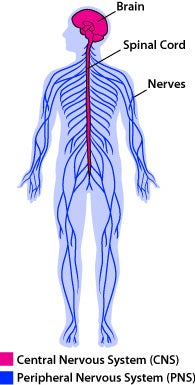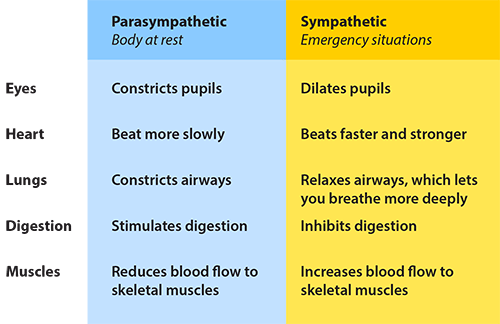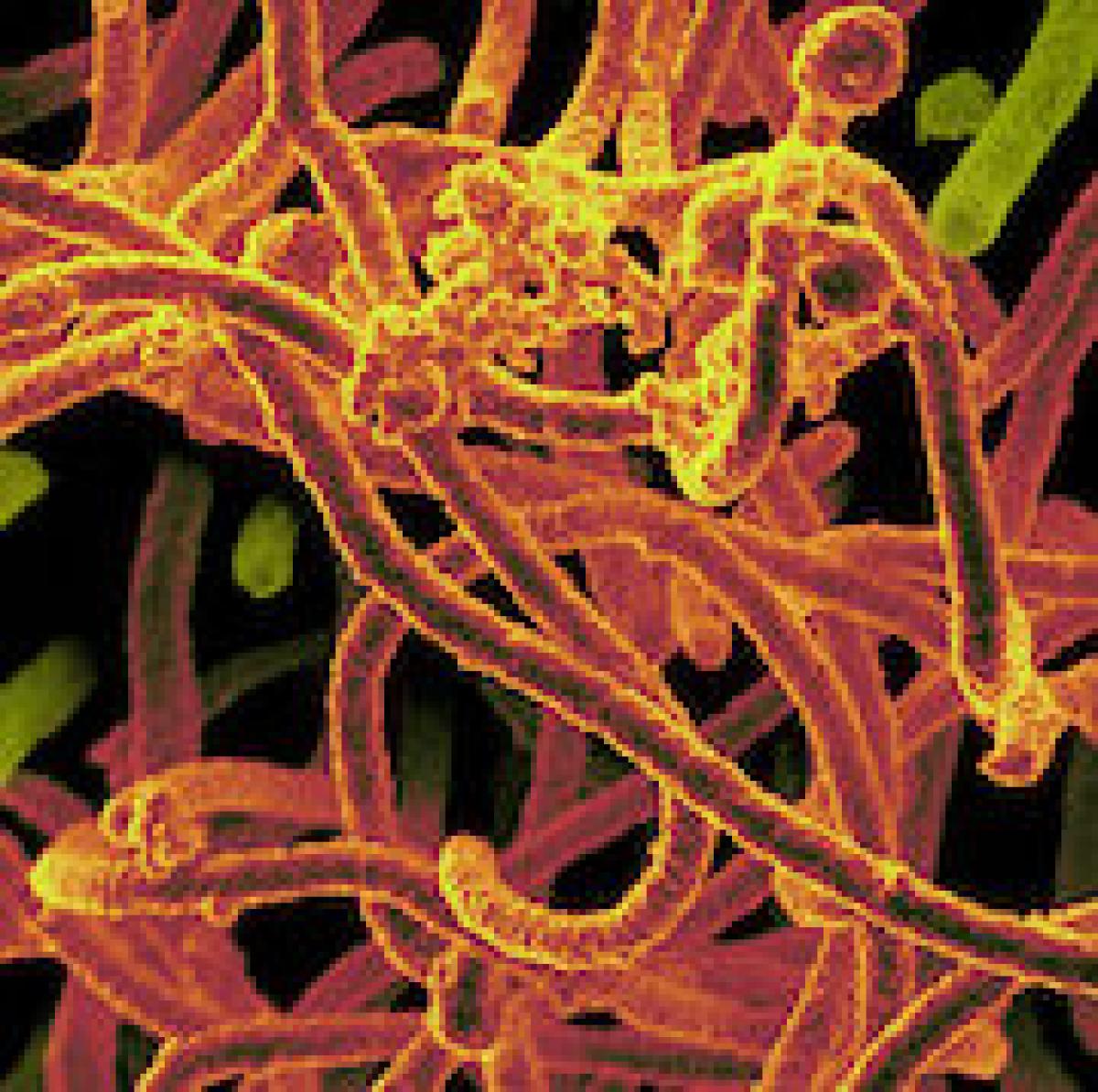Parts of the Nervous System
The center of the nervous system is the brain. The brain takes in what your eyes see and ears hear, and if you decide that you want to move around, your brain tells your muscles to do it. Your brain makes your muscles move by sending tiny electrical signals to them through your nerves. Remember how neurons can be really long? Well, nerves are just a lot of those really long neurons all bunched together. Those really long neurons each send a small electrical shock to your muscles, which makes them move, moving your body.
Your brain makes your muscles move by sending tiny electrical signals to them through your nerves. Remember how neurons can be really long? Well, nerves are just a lot of those really long neurons all bunched together. Those really long neurons each send a small electrical shock to your muscles, which makes them move, moving your body.
The nervous system is really complicated, but it can be divided into two really general parts. One is the Central Nervous System (or CNS). The CNS consists of your brain and spinal cord. The brain and spinal cord are inside your skull and vertebrae (the vertebrae make up your backbone). These bones protect the CNS when you get into accidents.
The other part of the nervous system is the Peripheral Nervous System (or PNS). The PNS consists mainly of the nerves that go to and from the CNS. Unlike the CNS, though, there is no bony protection for the PNS. Have you ever hit your "funny bone?" That odd feeling was you pinching one of the nerves in your arm. That nerve is part of the PNS. It has no bones to protect it so it's easy to hit!
Automatic Changes
A second way to divide the nervous system up is based on what it does. Suppose you were out in the woods and met a bear. You'd want to run away, and fast! One part of your nervous system makes sure you can run to safety. This part is called the sympathetic nervous system. When the sympathetic nervous system turns on, your heart beats faster and more blood gets pumped to your muscles so you can put up a fight or run like crazy.
But luckily you don't usually meet bears. There's another part of the nervous system that makes sure your everyday needs are met. It's called the parasympathetic nervous system. When you eat food and drink water, the parasympathetic nervous system turns on to make sure that your body digests it properly. Not as exciting as running from a bear, but it's just as important, if not more.

Your breathing, your heart beating, and your guts moving: you don't have to think about these things. Your nervous system takes care of them for you automatically (thanks, nervous system!) But even though you don't think about them, they can be changed. And the sympathetic and parasympathetic parts of your nervous system cause a lot of that change.
Together, the sympathetic and parasympathetic systems make up the autonomic system of the PNS. The other part of the PNS, the somatic system, controls all voluntary muscles of your body. So when you decide to move a muscle, you are using the somatic part of your peripheral nervous system.
Bibliographic details:
- Article: Parts of the Nervous System
- Author(s): Dr. Biology
- Publisher: Arizona State University School of Life Sciences Ask A Biologist
- Site name: ASU - Ask A Biologist
- Date published:
- Date accessed:
- Link: https://askabiologist.asu.edu/parts-nervous-system
APA Style
Dr. Biology. (). Parts of the Nervous System. ASU - Ask A Biologist. Retrieved from https://askabiologist.asu.edu/parts-nervous-system
Chicago Manual of Style
Dr. Biology. "Parts of the Nervous System". ASU - Ask A Biologist. . https://askabiologist.asu.edu/parts-nervous-system
Dr. Biology. "Parts of the Nervous System". ASU - Ask A Biologist. . ASU - Ask A Biologist, Web. https://askabiologist.asu.edu/parts-nervous-system
MLA 2017 Style
Be Part of
Ask A Biologist
By volunteering, or simply sending us feedback on the site. Scientists, teachers, writers, illustrators, and translators are all important to the program. If you are interested in helping with the website we have a Volunteers page to get the process started.

